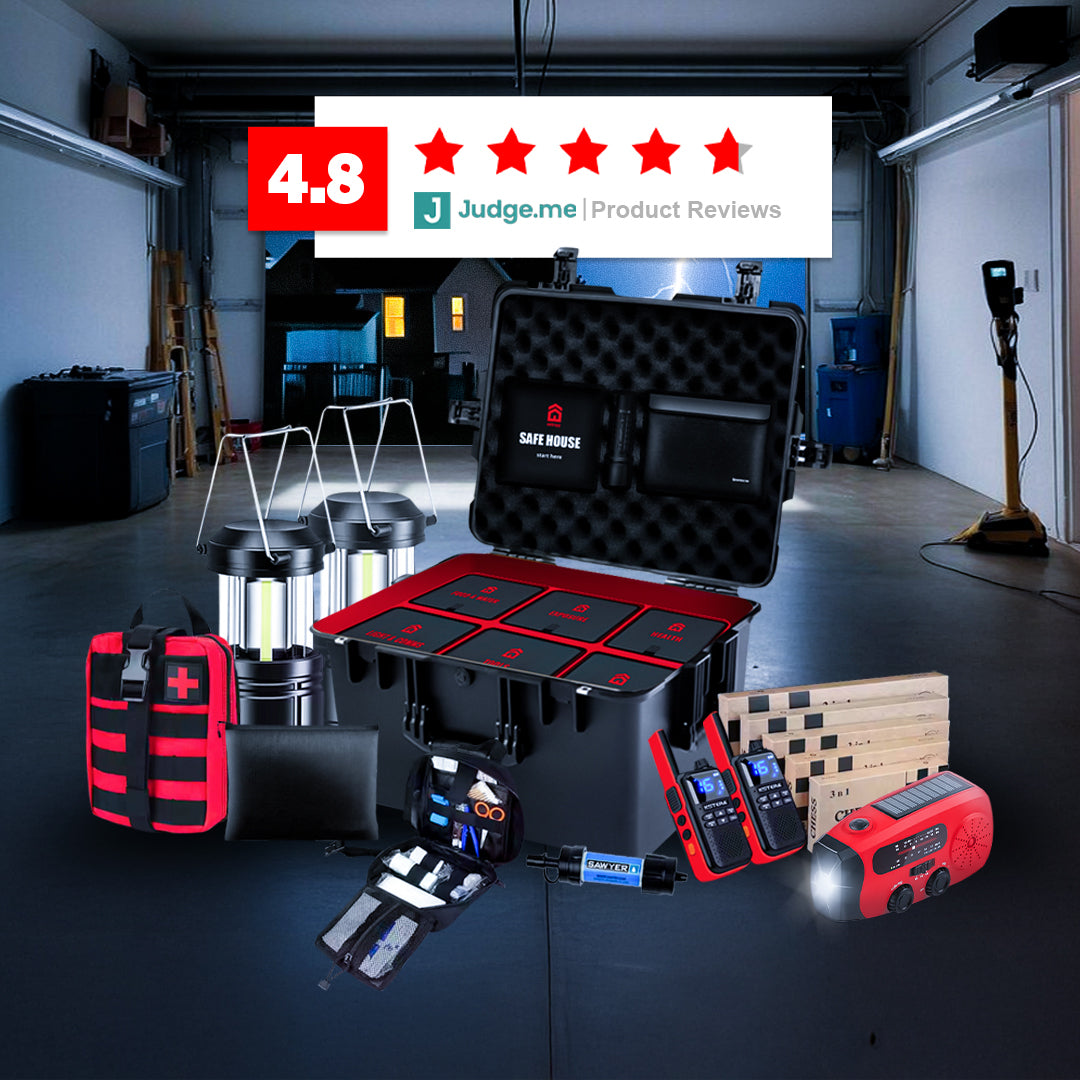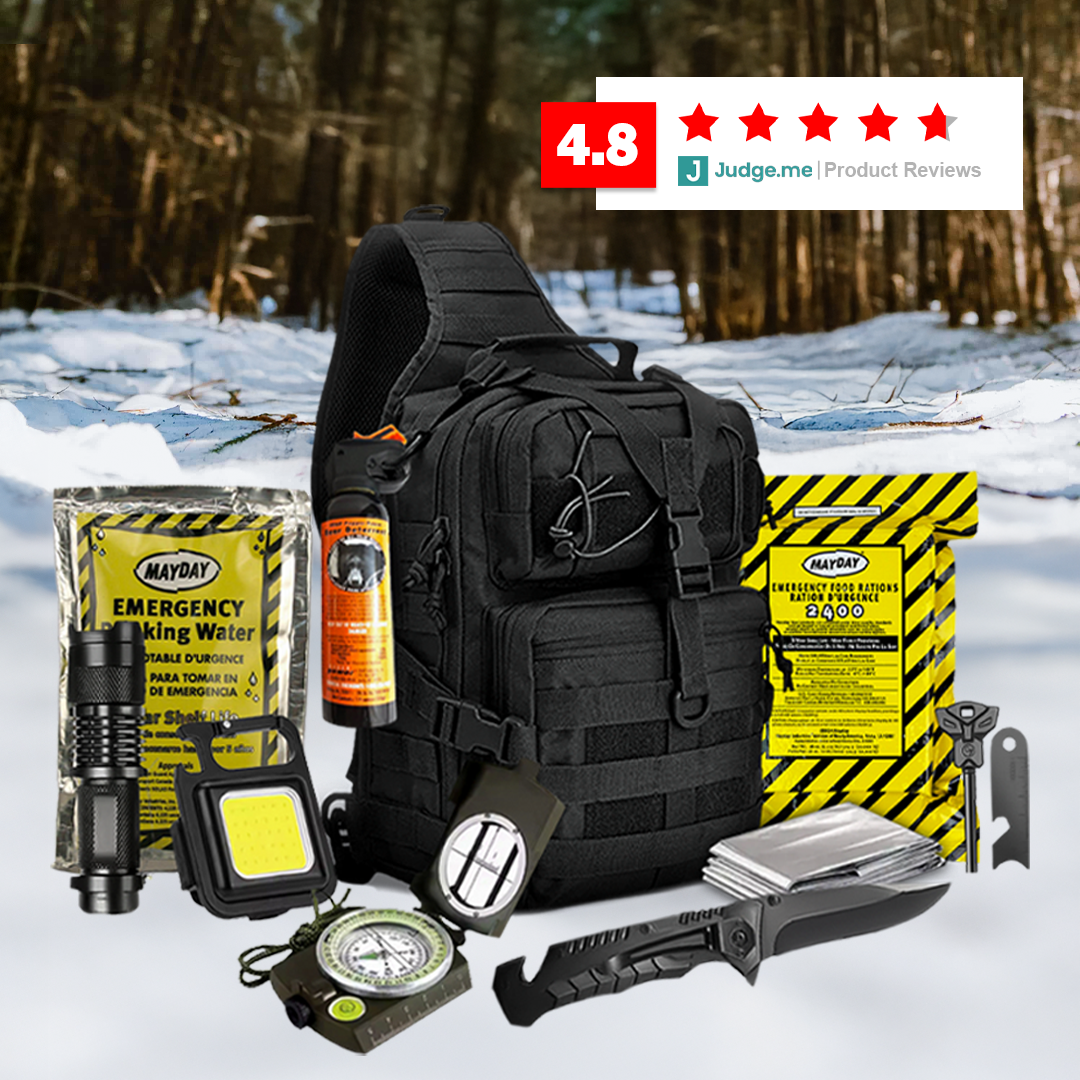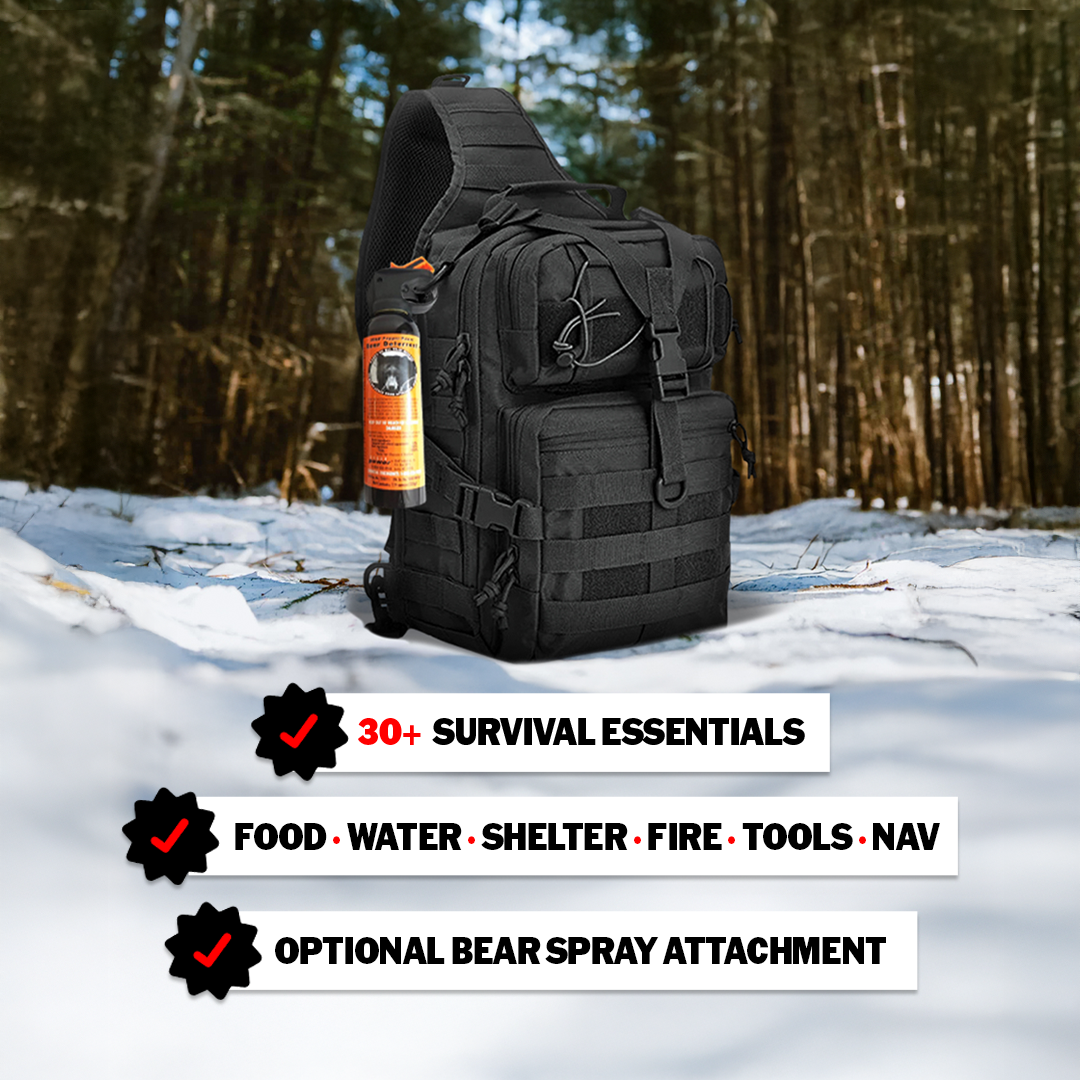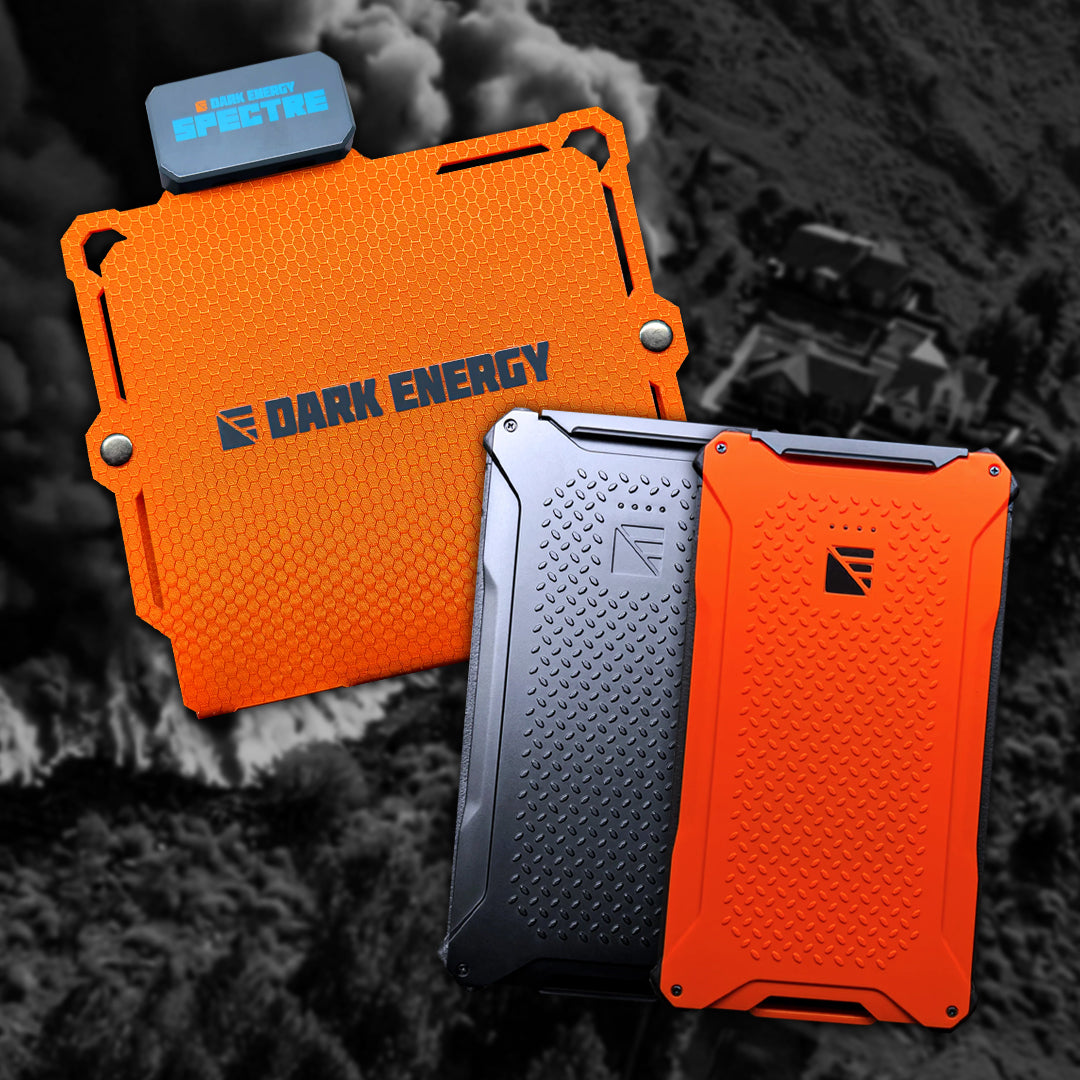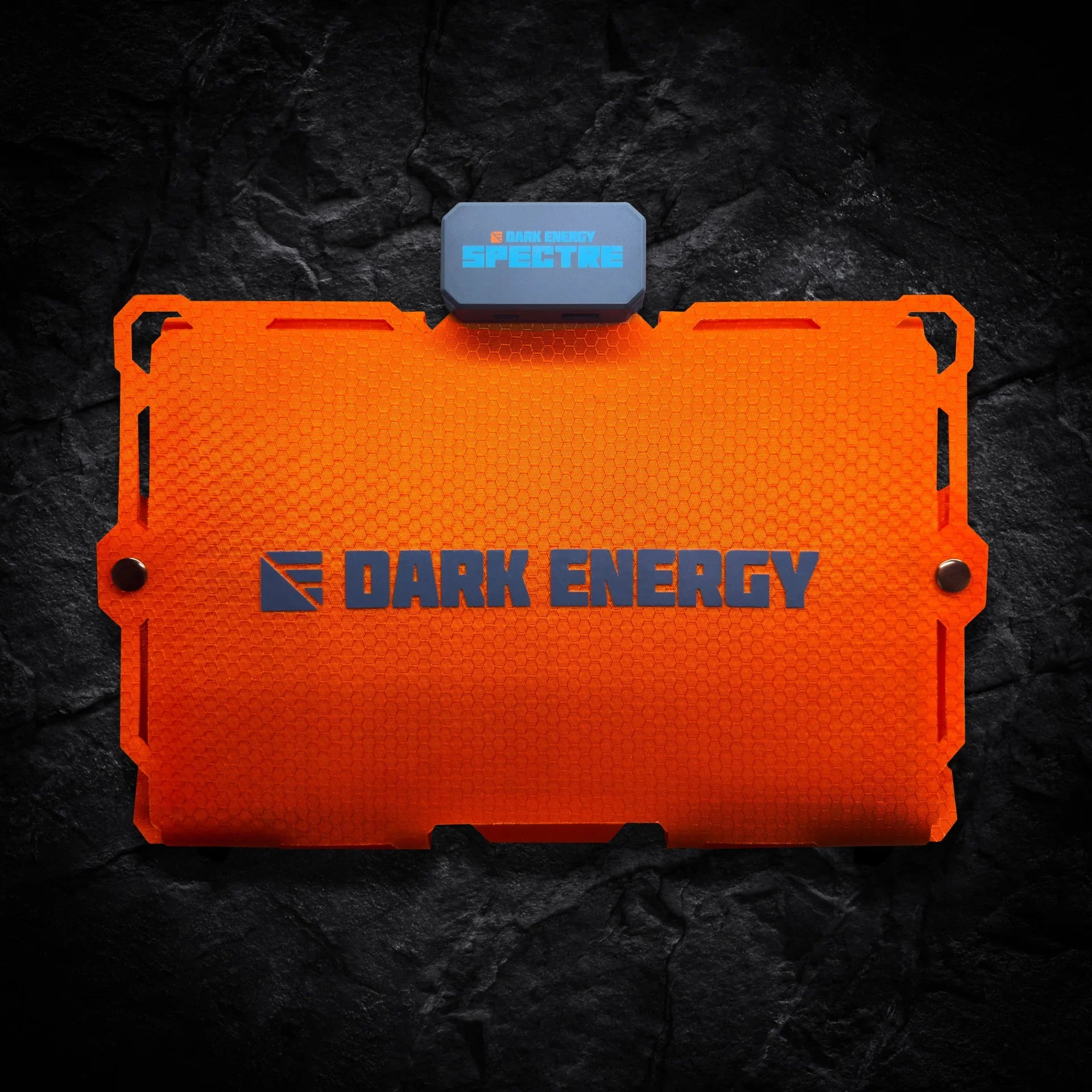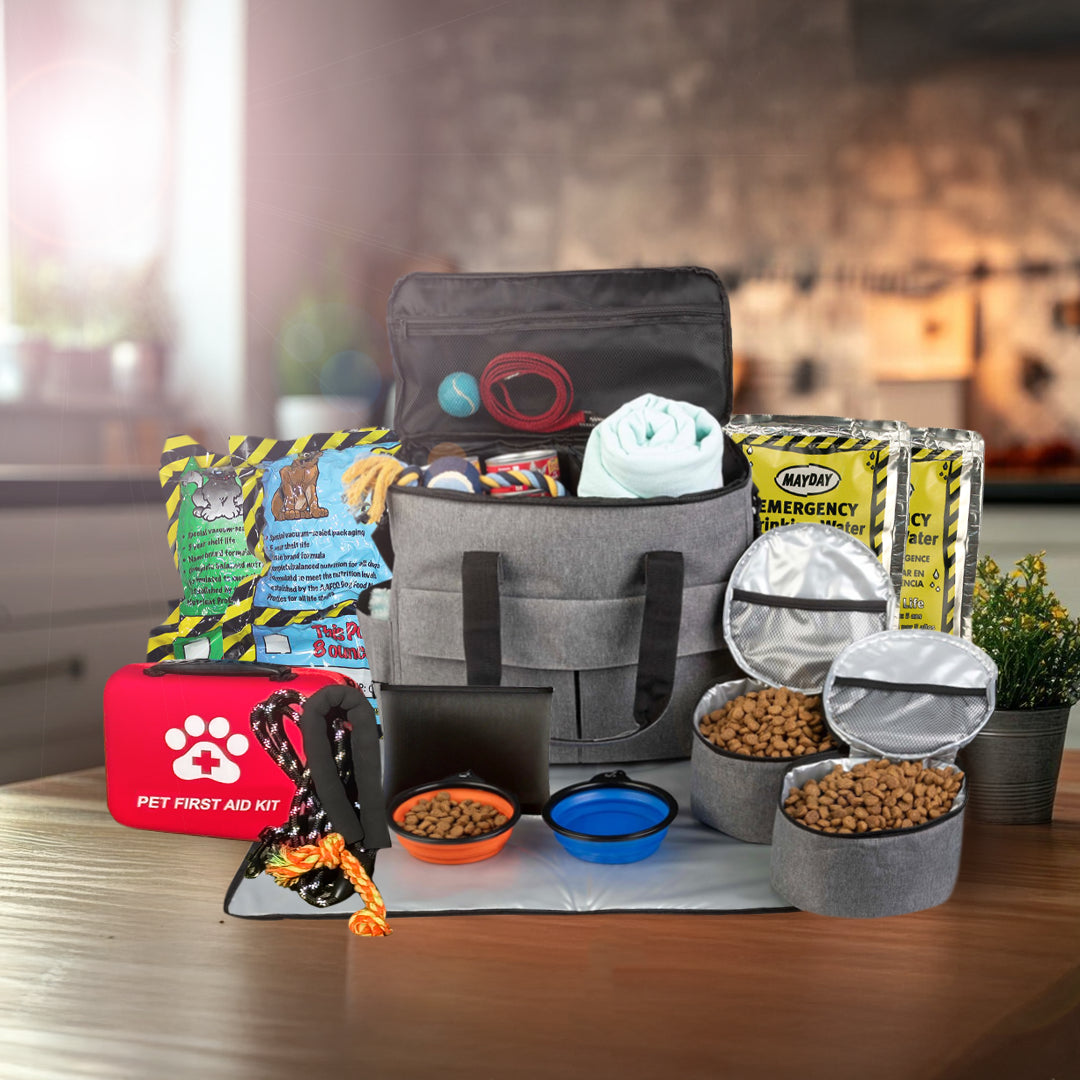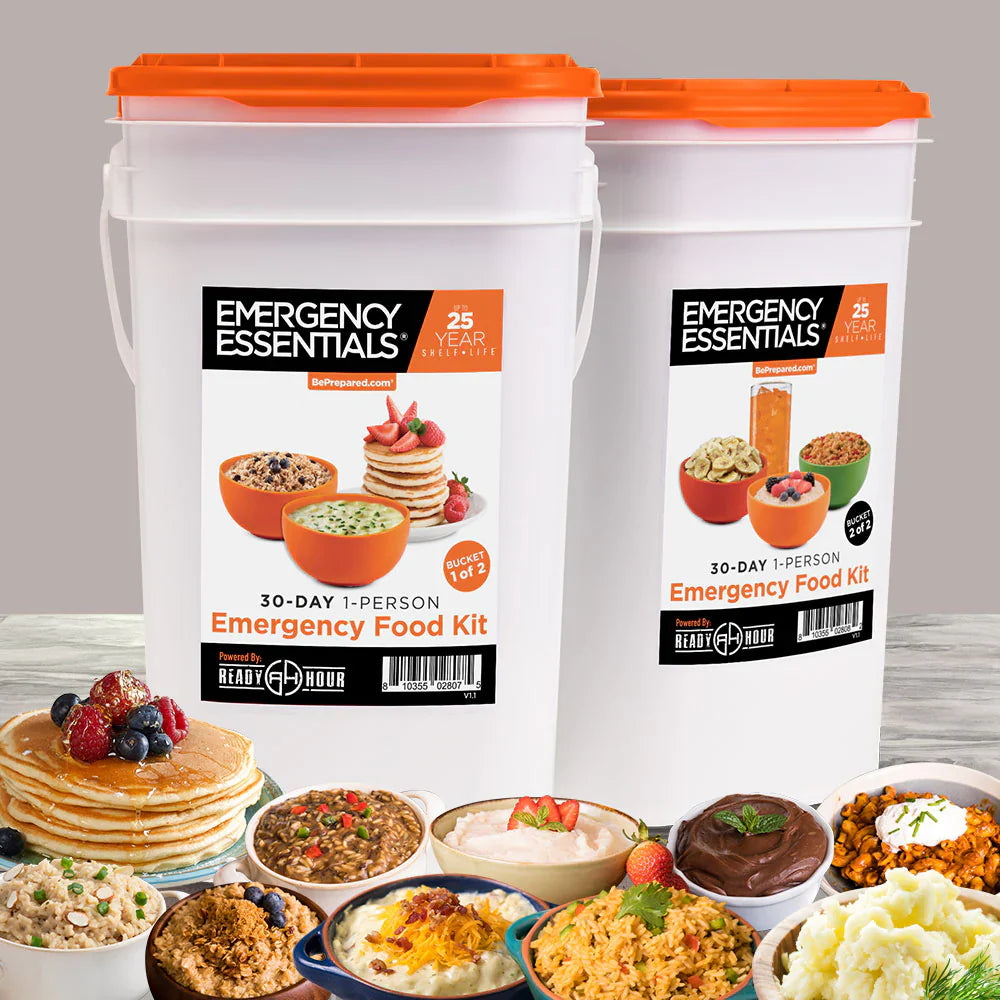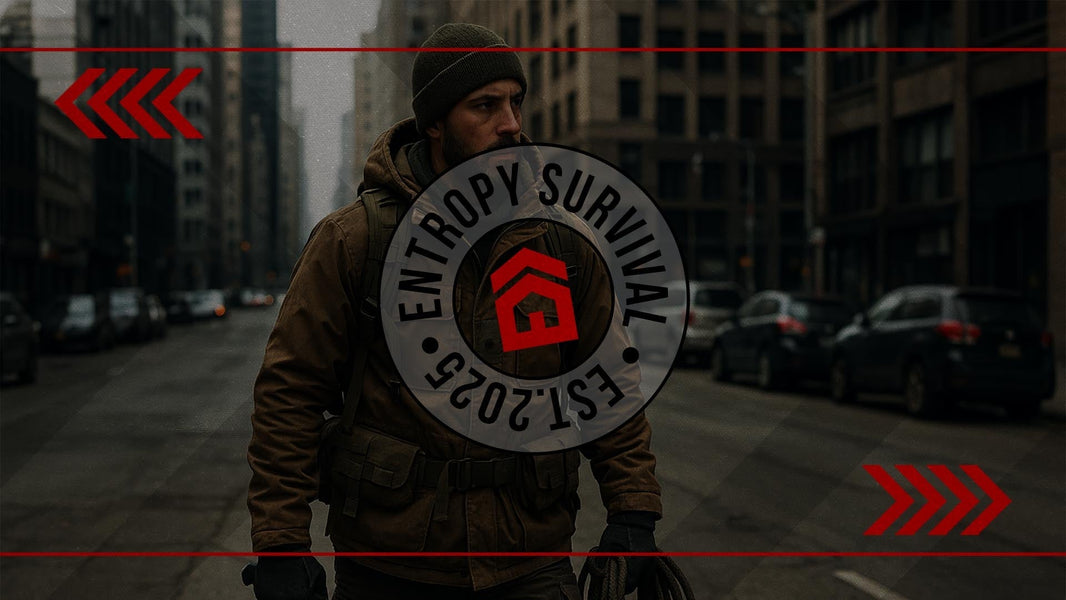When people think about survival skills, their minds often drift to dramatic wilderness scenarios involving bear encounters and shelter building in remote forests. While these situations certainly exist, the reality is that survival skills encompass a much broader range of capabilities that can save your life in everyday emergencies, natural disasters, and unexpected crises that happen far closer to home than most people realize.
At Entropy Survival, where our Army veteran leadership has spent decades mastering survival techniques in both military operations and civilian emergency preparedness, we understand that true survival skills go far beyond the wilderness techniques you see on television. Our approach to survival education emphasizes practical, real-world applications that serve families in everything from power outages to natural disasters, because survival isn't just about extreme situations, it's about building the confidence and capability to handle whatever life throws at you.
The Foundation of All Survival Skills
The most critical survival skill isn't fire-making or shelter construction, though both are important. It's the ability to maintain clear thinking under pressure while making rational decisions when everything around you feels chaotic. This mental resilience forms the foundation upon which all other survival capabilities build, and it's something that can be developed through understanding, practice, and preparation.
Professional survival training begins with teaching people to control their initial panic response, because panic kills more people in emergency situations than actual physical threats. When your house catches fire, when your car breaks down in a blizzard, or when an earthquake hits your community, your survival depends first on your ability to think clearly and act deliberately rather than reacting emotionally to fear and uncertainty.
This is why military survival training emphasizes decision-making frameworks and systematic thinking under stress. The survival acronym STOP has guided countless people through crisis situations: Stop what you're doing, Think about your situation, Observe your environment and resources, and Plan your next actions based on priorities. This simple framework works whether you're lost in the wilderness or dealing with a family emergency at home.
The veteran perspective that shapes our approach at Entropy Survival recognizes that survival situations rarely announce themselves politely. They develop suddenly, often when you're already tired, stressed, or dealing with other challenges. The mental skills that help you survive are the same ones that help you excel in daily life: situational awareness, problem-solving ability, and the confidence that comes from knowing you can handle whatever situations arise.
Developing these mental survival skills begins with honest assessment of your current capabilities and systematic building of confidence through knowledge and practice. You don't become a survivor by hoping you'll never need these skills; you become a survivor by developing them before you need them, when you have the luxury of learning without life-and-death pressure.
Essential Physical Survival Skills Every Person Should Master
While mental preparedness forms the foundation, physical survival skills provide the practical capabilities that can mean the difference between life and death in emergency situations. These skills fall into several categories, each addressing fundamental human needs that must be met to sustain life when normal support systems fail.
Shelter and thermal regulation represent the most immediate survival priority in most emergency situations, because exposure kills faster than hunger or thirst. Understanding how to maintain your body temperature using available materials can save your life whether you're stranded in a snowstorm or dealing with power outages during extreme weather. This includes knowing how to layer clothing effectively, create windbreaks and insulation using natural materials, and recognize the early signs of hypothermia and heat-related illnesses.
The basic principles of emergency shelter apply whether you're building a lean-to in the forest or improving your home's insulation during a power outage. Heat rises, cold settles, and wind strips away warmth faster than almost any other factor. Understanding these principles helps you make better decisions about clothing, positioning, and resource allocation in any emergency situation.
Water procurement and purification skills become critical whenever normal water supplies are compromised by natural disasters, infrastructure failures, or contamination events. Knowing how to locate, collect, and purify water from natural sources can sustain you for weeks, while understanding water storage and conservation techniques helps stretch limited supplies during extended emergencies.
Modern water purification encompasses multiple techniques, from boiling and chemical treatment to filtration systems and UV sterilization. Each method has advantages and limitations, and the best approach depends on your specific situation, available resources, and the types of contamination you're addressing. The water filtration system included in comprehensive emergency kits like our Safe House survival kit provides redundant purification capabilities that work reliably even when other methods fail.
Fire creation and management skills serve multiple survival functions beyond simple warmth and cooking. Fire provides light for navigation and tasks, signals for rescue, sterilization for medical equipment, and psychological comfort during stressful situations. Understanding different fire-starting techniques, from primitive friction methods to modern fire-starting tools, ensures you can create fire under various conditions and with different available materials.
The magnesium alloy firestarter included in professional survival kits can ignite fires even in wet conditions, but knowing how to prepare tinder, build sustainable fires, and manage fire safety prevents dangerous situations while maximizing the utility you gain from this essential survival tool.
Navigation and Communication Skills for Modern Survival
Navigation skills have evolved dramatically from traditional map and compass techniques to include modern GPS systems, smartphone applications, and satellite communication devices. However, the most effective survival approach combines traditional and modern navigation methods, because electronic systems can fail exactly when you need them most.
Understanding basic land navigation using natural indicators helps you maintain directional awareness even without instruments. The sun rises in the east and sets in the west, stars provide directional references, and natural features like wind patterns and vegetation growth can indicate direction when other reference points aren't available. These techniques work whether you're hiking in Yellowstone near our headquarters in Cody, Wyoming, or navigating through an unfamiliar city during an emergency evacuation.
Modern GPS devices and smartphone applications provide incredibly accurate positioning information, but they depend on satellite signals, battery power, and functional hardware. Understanding how to use these tools effectively while maintaining backup navigation capabilities ensures you can find your way regardless of equipment failures or signal problems.
Communication skills extend beyond simple radio operation to include signaling techniques, message planning, and information security considerations that can be critical during emergencies. Knowing how to use different types of emergency communication equipment, from basic two-way radios to satellite messengers, helps you coordinate with family members, emergency services, and mutual aid networks when normal communication infrastructure fails.
The 3-in-1 radio systems included in comprehensive emergency preparedness kits provide multiple communication and information capabilities, combining AM/FM/NOAA weather radio reception with emergency signaling and device charging functions. Understanding how to operate these systems effectively before emergencies occur ensures you can access critical information and maintain communication capabilities when they're needed most.
Food Procurement and Preservation in Emergency Situations
Food procurement skills for survival situations encompass both foraging for wild edibles and maximizing the utility of stored food supplies during extended emergencies. While hunting and fishing receive significant attention in survival training, plant identification and foraging skills often provide more reliable nutrition sources for most people in most situations.
Understanding which plants are safe to eat in your geographic region can supplement stored food supplies and provide essential nutrients during extended survival situations. However, plant identification requires significant study and practice, because misidentification can result in poisoning that creates life-threatening medical emergencies when professional medical care isn't available.
For most families, food security during emergencies depends more on proper storage, preservation, and rationing of stored supplies than on wild food procurement. Understanding how to maximize the nutritional value and storage life of emergency food supplies, how to cook efficiently with limited fuel, and how to ration food appropriately during uncertain circumstances provides more practical survival value than hunting and fishing skills for most people.
The comprehensive food supplies included in professional emergency kits provide calculated nutrition for specific time periods, but understanding how to supplement and extend these supplies through procurement, preservation, and efficient cooking techniques can significantly extend your family's food security during prolonged emergencies.
First Aid and Medical Skills for Survival Situations
Medical skills represent some of the most critical survival capabilities, because injuries and illnesses can quickly become life-threatening when professional medical care isn't immediately available. Understanding basic first aid, wound care, and medical assessment techniques can save lives during emergencies while preventing minor injuries from becoming major medical crises.
Basic first aid training should cover bleeding control, shock treatment, fracture stabilization, and burn care, because these injuries occur frequently in emergency situations and can be life-threatening without proper treatment. Understanding how to use the contents of a well-equipped first aid kit effectively requires training that goes beyond simply knowing what supplies are included.
The 164-item first aid kit included in our Safe House survival kit provides comprehensive medical supplies for treating common emergency injuries and illnesses, but the effectiveness of these supplies depends entirely on understanding how to use them properly. This is why we emphasize the importance of first aid training as part of comprehensive emergency preparedness, because equipment without knowledge provides limited survival value.
Advanced medical skills like medication administration, wound closure techniques, and improvised medical equipment become increasingly valuable during extended emergencies when professional medical care may be delayed or unavailable. Understanding how to assess medical priorities, provide supportive care, and make difficult medical decisions under pressure can mean the difference between life and death for family members during serious emergencies.
Psychological first aid skills help you support family members and others who may be struggling with the emotional trauma that accompanies survival situations. Understanding how to provide emotional support, maintain group morale, and recognize signs of serious psychological distress helps preserve the mental health that's essential for good decision-making during extended emergencies.
Building and Maintaining Essential Survival Equipment
Understanding how to select, maintain, and use survival equipment effectively bridges the gap between theoretical knowledge and practical capability. The best survival skills become useless if your equipment fails when you need it most, while even basic equipment can provide extraordinary capability when used skillfully by someone who understands its applications and limitations.
Quality survival equipment represents a significant investment, but it provides capabilities that can save your life when properly selected and maintained. This is why professional emergency preparedness emphasizes curated, high-quality gear that works reliably under stress rather than inexpensive alternatives that may fail exactly when you need them most.
Multi-purpose tools maximize the utility you can carry while minimizing weight and bulk, which becomes critical when mobility is important or storage space is limited. Understanding how to use basic tools for multiple applications, how to maintain cutting edges and mechanical functions, and how to improvise tool applications for unexpected needs extends your capabilities far beyond what specific tools normally provide.
The all-purpose tool included in comprehensive survival kits serves dozens of functions from basic cutting and food preparation to equipment repair and construction tasks. However, its effectiveness depends on understanding proper use techniques, maintenance requirements, and safety considerations that prevent injuries while maximizing utility.
Reliable lighting equipment becomes essential when normal electrical systems fail, but understanding different lighting technologies, power management techniques, and signaling applications helps you get maximum value from limited battery supplies while maintaining the visibility needed for safe movement and task completion.
Tactical flashlights like those included in professional emergency kits provide powerful illumination with efficient battery usage, but understanding power management, signaling applications, and maintenance requirements ensures these tools remain functional throughout extended emergencies.
Training and Skill Development Strategies
Effective survival skill development requires systematic training that combines theoretical knowledge with practical application under progressively more challenging conditions. Reading about survival techniques provides important background information, but actual competence develops only through hands-on practice that builds muscle memory and confidence under realistic conditions.
Starting with basic skills and building systematically toward more advanced techniques prevents dangerous overconfidence while ensuring solid foundations that support more complex capabilities. Understanding how to practice safely, how to progress appropriately, and how to assess your developing competence helps you build real survival capabilities rather than false confidence that could prove dangerous during actual emergencies.
Professional survival training programs provide structured learning environments where you can develop skills safely under expert supervision, but continuing practice and skill maintenance must continue long after formal training ends. This is why we recommend that families make survival skill practice a regular part of their emergency preparedness activities, because skills that aren't practiced regularly deteriorate rapidly when you need them most.
The AI-powered survival guide that comes with our Safe House kit provides on-demand access to survival information and techniques, but it's designed to supplement rather than replace hands-on training and practice. Understanding how to use digital resources effectively during emergencies while maintaining independent capabilities that don't depend on technology ensures you have multiple ways to access critical survival information.
Training with family members and community groups builds shared capabilities that enhance everyone's survival prospects while creating mutual aid networks that provide security and support during extended emergencies. Understanding how to teach survival skills to others, how to coordinate group survival efforts, and how to make group decisions under pressure multiplies your individual capabilities through effective teamwork.
Integration with Modern Emergency Preparedness
Contemporary survival skills must integrate seamlessly with modern emergency preparedness approaches that combine traditional techniques with advanced equipment, communications, and planning methods. This integration approach recognizes that the most effective survival strategies leverage the best of both traditional knowledge and modern technology while avoiding dependence on any single approach or system.
Modern emergency preparedness emphasizes systematic planning that addresses multiple threat scenarios while building flexible capabilities that adapt to changing circumstances. Understanding how survival skills fit into broader emergency preparedness strategies helps you allocate training time and resources effectively while building comprehensive capabilities that address realistic threats to your family's safety and security.
The emergence of climate change and increasing urbanization creates new survival challenges that require adaptation of traditional techniques to modern environments and circumstances. Understanding how classic survival principles apply to urban disasters, infrastructure failures, and climate-related emergencies helps you develop relevant skills that address the threats you're most likely to face.
This is why our location near Yellowstone in Cody, Wyoming provides such valuable perspective on both wilderness survival and modern emergency preparedness. The combination of rugged natural environment and modern infrastructure creates the perfect training ground for understanding how traditional survival skills integrate with contemporary emergency preparedness approaches to create comprehensive family safety capabilities.
Building survival skills as part of comprehensive emergency preparedness means understanding how individual capabilities connect to family planning, community resources, and mutual aid networks that enhance everyone's survival prospects. The goal isn't to become completely self-sufficient in isolation, but to develop the skills and resources that allow you to contribute effectively to family and community survival efforts while maintaining your own security and self-reliance.
Moving Forward with Practical Survival Skill Development
The journey toward developing comprehensive survival skills begins with honest assessment of your current capabilities and systematic building of knowledge and practical experience over time. Understanding what skills you already possess, what gaps need attention, and how to prioritize your training efforts helps you make progress efficiently while avoiding the overwhelm that stops many people from developing any survival capabilities at all.
Starting with basic skills that address immediate survival needs while building toward more advanced techniques that enhance your capabilities creates a logical progression that maintains motivation while ensuring you always have useful capabilities even if your training gets interrupted. This systematic approach works whether you're starting from complete beginner status or building on existing outdoor and emergency preparedness experience.
The most important step is simply beginning, because survival skills that exist only in theory provide no practical benefit when emergencies actually occur. Understanding how to start training safely, how to find reliable instruction, and how to practice effectively transforms abstract knowledge into practical capabilities that can save your life and protect your family when normal support systems fail.
At Entropy Survival, we believe that combining proven survival techniques with modern emergency preparedness equipment and planning creates the most effective approach to family safety and security. Our military experience has taught us that the best survival strategies prepare for realistic threats using proven methods while maintaining the flexibility to adapt when circumstances change unexpectedly.
Whether you're building your first emergency preparedness kit or expanding existing survival capabilities, remember that competence comes through consistent practice and systematic skill development rather than theoretical knowledge alone. The confidence that comes from knowing you can handle whatever challenges arise provides security that goes far beyond specific survival techniques, creating the mental foundation for success in all areas of life.
Make sure to check out more articles in our News & Views section. Feel free to reach out any time to see how Entropy Survival can help you prepare you and your family for any disaster or survival scenario.
Ready to transform survival knowledge into practical family preparedness? Discover how Entropy Survival's expert-curated emergency kits provide the reliable equipment foundation that supports effective survival skill development and comprehensive emergency preparedness.


